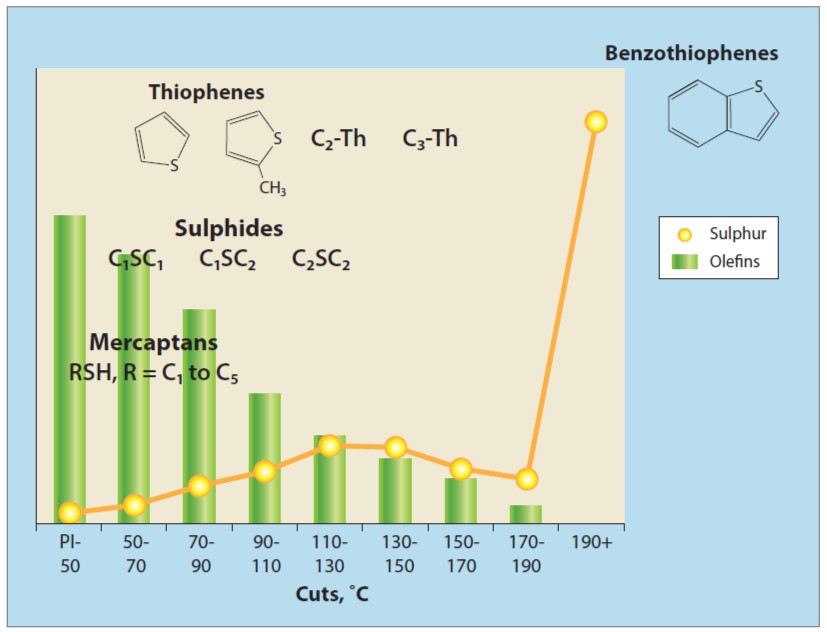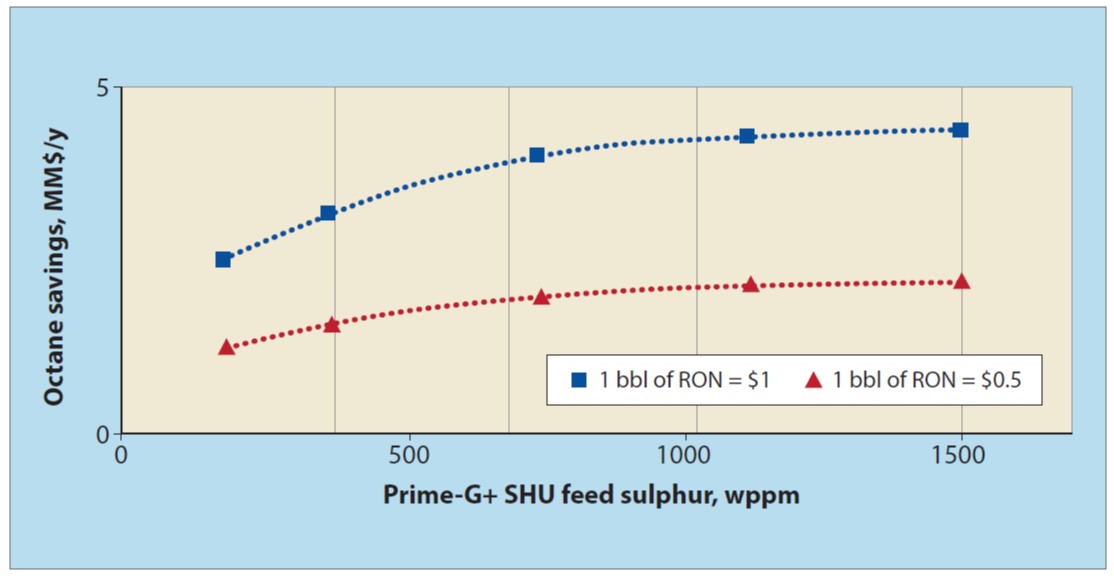First published in PTQ Q1 2021
Boris HESSE, Technologist, Catalysts & Adsorbents Global Business Unit
Olivier BOISIER, Technology Team Manager, Catalysts & Adsorbents Global Business Unit

For the post-treatment of FCC gasoline, fixed-bed HDT is by far the most trusted solution because of its low capex, its ease of operation, and its flexibility.
This technology also allows for excellent octane retention provided there is combined use of smart schemes and highly specific catalysts capable of very high HDS rates with minimum olefins saturation. Axens offers both as part of the Prime-G+™.
A smart scheme should take advantage of the particularities of the FCC gasoline, the most striking being that olefins are more concentrated in the light fraction of the gasoline while sulphur is more concentrated in the heavy fraction (see the Figure on the left). The combination of the Prime-G+™ SHU reactor with the PrimeG+ ™ splitter capitalises on this and allows for the production of an olefins-rich, desulphurised naphtha, bypassing the HDS section and thereby preserving all the valuable light olefins.

The formation of mercaptans in the HDS section through the addition of H2S to olefins is a critical matter when targeting ultra-low sulphur FCC gasoline (see the figure on the left). Basically, each ppm of mercaptan that is formed inside the unit requires that an additional ppm of sulphur from the feed be removed, which can dramatically impact octane retention since the octane loss increases exponentially with the HDS rate. Axens offers several solutions, both catalytic and schematic, to tackle this problem.

On the road to high octane, one should also lean on the operation of the FCC as it can have big consequences for both the absolute octane value of the FCC gasoline and octane retention in the post-treating unit. Higher FCC severity for instance generally makes for a more aromatic gasoline, which directionally has a higher octane value (see the Table on the left). The olefins distribution is modified as well which has an impact on octane preservation in the post-treating unit.

The challenge for catalyst manufacturers is contaminants tolerance is key to long cycle lengths matching the FCC turnaround schedule and to important energy savings. With HR 845 for the SHU and the duo HR 806/HR 841 for the HDS boasting more than 1000 cumulated references, Axens has created benchmark catalysts for FCC gasoline post-treatment. Capitalising on the feedback from nearly 200 running units and relying on extensive R&D work conducted jointly with IFPEN, Axens is now bringing to the market a full range of new Prime-G+™ catalysts: HR 855 for higher SHU activity, HR 856 for higher HDS selectivity and HR 866 for higher HDS activity.
These new catalysts will help refiners take on new challenges and enhance further their profitability, allowing them for instance to process more refractory/more contaminated feeds from both FCC and other sources to provide catalytic solutions addressing high octane retention along with high activity/contaminants tolerance as those parameters generally go in opposite directions. High activity/ (co-processing of coker naphtha, pyrolysis gasoline, and so on) and to reduce significantly both octane losses (see the Figure on the left) and hydrogen consumption.
Get the latest news about Proven Solutions in Oil Refining
Subscribe to our business newsletter to keep up to date with Axens news.
This newsletter gives access to our experts' insights and the opportunity to stay up-to-date with our latest products, technologies and services.